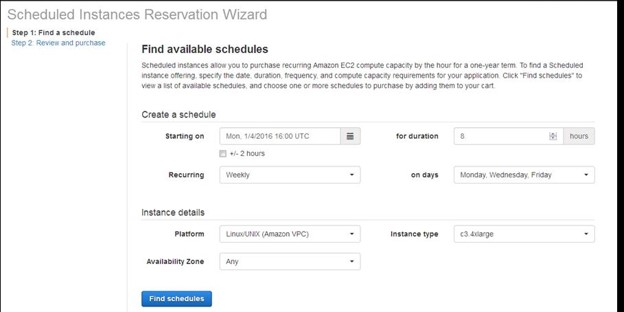What is an AWS Instance Scheduler and What is it Used For?

- The advantages of distributed computing incorporate adaptability and flexibility – as you just need to pay for the computing power your association needs. EC2 instances, as the fundamental compute service provided by AWS, EC2 pricing, when acquired on request, depends on the period of time the instance is utilized by the hour or the second.
- While this should imply that clients pay for what they require, the truth for some cloud clients is that this isn’t the situation. Non-production resources, for example, those utilized for advancement, testing, organizing, and QA, are ordinarily just required during workdays, 5 days each week. Regardless if it’s because of imprudence or absence of mindfulness, a significant number of these instances is left running 24×7, bringing about billions of dollars in squandered yearly dollars.
- It’s a simple rule: pay for the amount that you utilize. Cloud services need to be looked at just like any other utility. You have to use them merely when required to avoid spending more than necessary. You wouldn’t leave your cellphone running or leave the TV on all night, so why would you leave your instances running while you’re not using them? A simple AWS EC2 scheduler can do the savings for you.
- Alongside providing a means to automate EC2 schedules easily, an EC2 scheduler also aids organizations with governance for their AWS accounts by Role-Based Access Control without giving direct access to the AWS EC2 management console. The application used to automate EC2 schedules offers a single-view dashboard of all of an organization’s accounts. This view paves the way for administrators to create role and team structures, set permission levels and monitor activity.
- AWS management tools which provide an AWS scheduler service may also offer on the house cost control functionality to lessen cloud waste, like resource “rightsizing” to get resources that are overprovisioned and make it simple to resize them for additional cost savings. By decreasing an instance by one size, you can save fifty percent of the EC2 cost. By decreasing two sizes, you can save seventy-five percent of the original cost. Joining multiple cost-savings techniques, like scheduling and rightsizing, gives out the highest savings amount.
How can an EC2 Scheduler Optimize Costs?
It makes it simple to automatically start and stop ec2 instances so that they are turned off when not required. A lot of AWS monitoring tools merely offer cost visibility, while a scheduler actually gives results as it takes action to reduce costs.
How to Use A Scheduler?
- An instance scheduler mostly takes the form of an application to which users connect with their IAM credentials or with an IAM role.
- The application points out the instances entitled to the user´s AWS account and shows those it finds suitable for scheduling.
- The information available about the Instance Purchasing Option, Type and Region, enables users to choose those they wish to schedule or look for specific non-production instances to schedule.
- Ways to Determine On/Off Schedules:
The main idea is in placing instance off times by schedules. Generally, these schedules can be set in three ways:
- Schedules that are user-determined and rely on typical operations for your association. For example, if your team typically works 8 AM to 5 PM Monday through Friday, you should set schedules to turn non-production instances on during those times, and off for the rest of the week.
- By AWS automation in a policy engine that utilizes instance names and tags to provide schedules. For example, if you want to make a “QA team schedule”, you might need for all instances tagged “QA” to be placed on that schedule.
- By machine learning. Through relying on resource utilization history provided by AWS, AWS automation tools can automatically provide you with customized on or off schedule recommendations for every EC2 instance.
Newly prepared parking schedules are easy to design with the interactive UI. Days of the week and times of the day are shown on a grid and can easily be chosen with a click of a button. You can highlight the times where you want non-production EC2 instances parked, and then place the schedule to those appropriate instances.
Quickly, the UI will show a figure referring to the projected savings over the next thirty days, providing you with valuable insight as to optimal use does for cost reduction. The value of the projected savings will rise since more non-production instances are being added to the parking schedule.
Amazon recommends you to design various custom schedules to consider different usage scenarios, stating that a “one-size-fits-all” schedule is not the most efficient or realistic.